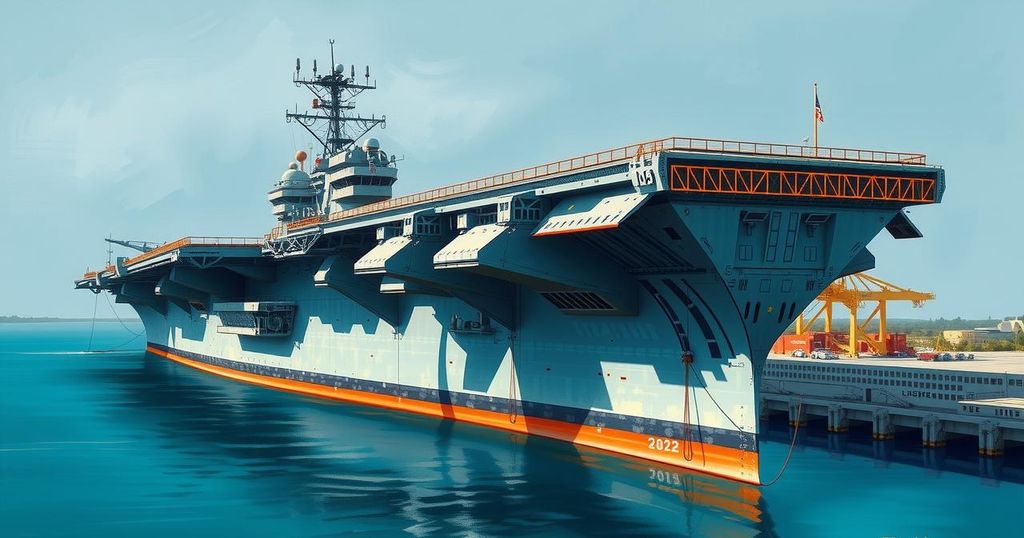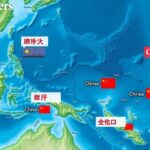China’s CNS Fujian Aircraft Carrier Nears Completion After Latest Sea Trials
China’s CNS Fujian aircraft carrier returned from its seventh sea trial, emphasizing advances in naval capabilities amid tensions in the South China Sea. With a displacement over 80,000 tons and electromagnetic catapults, the Fujian represents a significant step in China’s military development, anticipated to be operational by 2025 amid growing regional confrontations.
China’s latest aircraft carrier, CNS Fujian, has returned to a shipyard after completing its seventh sea trial, following three years since its launch. The Chinese military characterized these sea trials as a “normal arrangement” as part of the aircraft carrier’s ongoing construction. However, no immediate comments were received from the Chinese Defense Ministry in response to inquiries from Newsweek.
The significance of the Fujian’s development is heightened due to China’s territorial claims in the South China Sea, which conflict with those of neighboring countries such as Vietnam and the Philippines. Recent confrontations between Chinese and Philippine forces in the region have raised apprehensions regarding potential involvement from the United States, a longtime ally to the Philippines.
China currently possesses the largest navy globally by hull count, featuring over 370 vessels, including three operational aircraft carriers: CNS Fujian, CNS Liaoning, and CNS Shandong. The Fujian, with a full load displacement exceeding 80,000 tons, is equipped with advanced electromagnetic catapults, allowing for the launch of heavier combat aircraft akin to those utilized by the U.S. Navy’s Gerald R. Ford-class carriers.
Recent photos have depicted the Fujian at Jiangnan Shipyard in Shanghai after completing its sea trials. The carrier had been seen leaving for its trials in mid-March and was later tracked via satellite imagery near the Bohai Sea. Images also suggest the presence of mock-ups of various fighter aircraft on its flight deck, with the Chinese carrier fleet operating several fighter types, including J-15 variants.
In addition to the J-15 line, the Chinese navy has also been testing the next-gen J-35 fighter for carrier operations, positioning it as a competitor to the U.S. F-35C. Though an official commissioning date for the Fujian has not been disclosed, the Pentagon’s military power assessment anticipates it to be operational by the first half of 2025, following its first sea trial in May 2022.
Historically, the Liaoning required 10 sea trials before being commissioned in 2012, while the Shandong finished nine trials in 18 months prior to its 2019 commissioning. In contrast, the USS John F. Kennedy, a Gerald R. Ford-class carrier, is slated for delivery in July, with subsequent ships in the same class projected for delivery in the following years.
The U.S. Navy commands the world’s most extensive aircraft carrier fleet, comprising 11 operational warships, largely of the Nimitz-class and including the USS Gerald R. Ford since 2017. Commentary from the Center for Strategic and International Studies highlights the advanced nature of the Fujian’s electromagnetic launch system as a significant technological advancement compared to traditional steam-powered systems.
Looking ahead, the details regarding the potential construction of a fourth Chinese aircraft carrier remain uncertain, although expectations for future carrier development persist, especially concerning nuclear propulsion systems.
In summary, the CNS Fujian is approaching completion following its most recent sea trial, highlighting China’s advancements in naval technology amidst regional geopolitical tensions. Its advanced features, such as electromagnetic catapults, signify a shift in naval capabilities. The developments surrounding this carrier underscore the growing complexities in the South China Sea and anticipate the commissioning of further aircraft carriers in the near future.
Original Source: www.newsweek.com








Post Comment